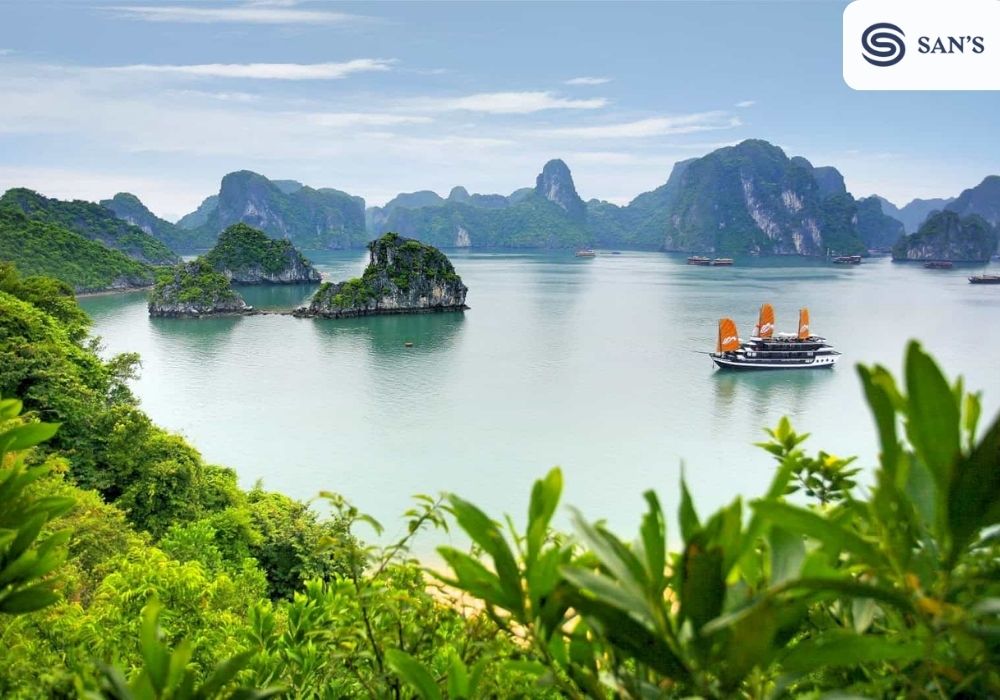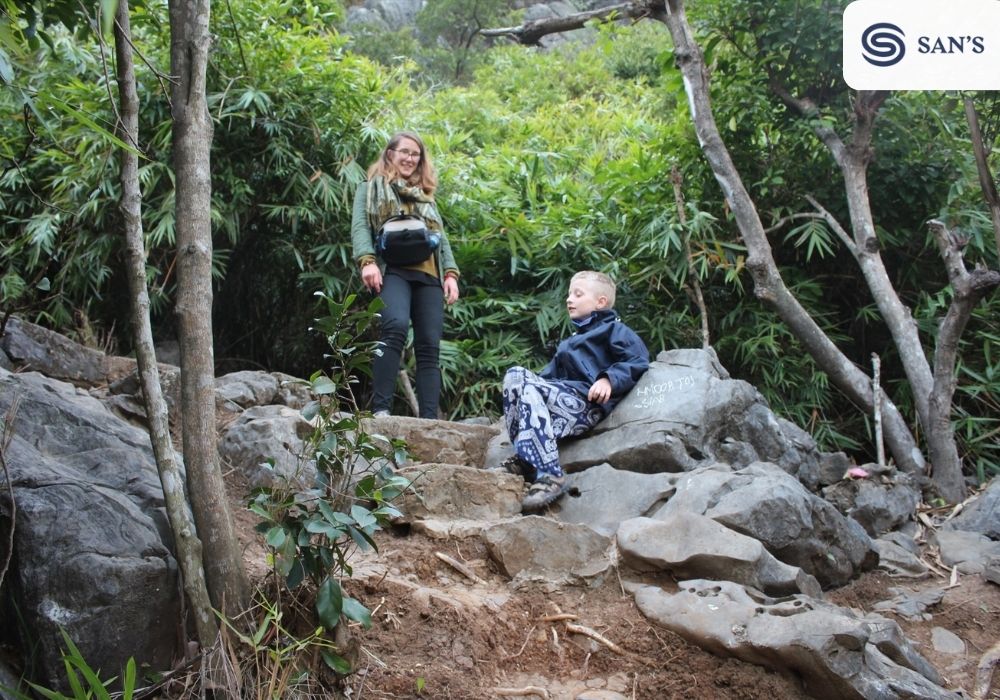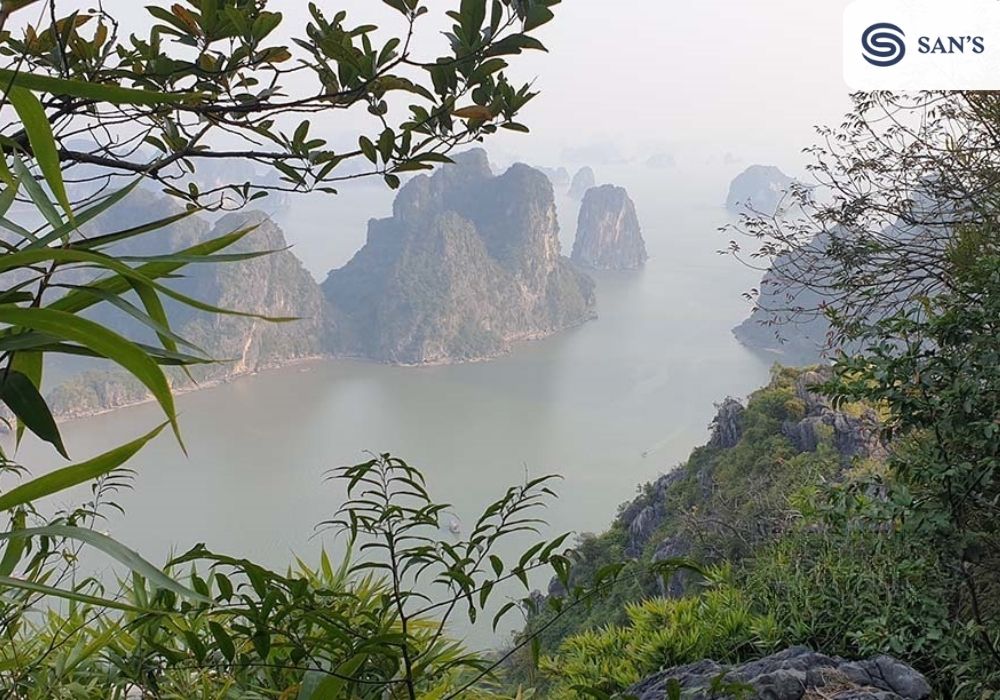Bai Tho Mountain, a jewel in Vietnam’s crown, is a fusion of breathtaking views and deep cultural significance. Known as ‘Poem Mountain,’ this serene peak in Ha Long City is a testament to the natural and historical richness of the region. The mountain’s name itself is rooted in legends and poetry, reflecting its artistic heritage. Understanding the best times to visit Bai Tho Mountain is essential to fully appreciate its beauty. Each season offers a unique perspective, from the verdant springs to the misty winters. This guide focuses on unveiling the best times to visit Bai Tho Mountain, ensuring a journey that’s not only visually stunning but also culturally enriching, truly encapsulating the spirit of Vietnam’s majestic landscapes.
Overview of Bai Tho Mountain

Bai Tho Mountain, a remarkable landmark in Northeast Vietnam, is situated in the bustling city of Ha Long, Quang Ninh Province. Renowned for its scenic beauty and historical significance, the mountain is an integral part of the famous Ha Long Bay, a UNESCO World Heritage Site. Standing at a modest height of about 200 meters, Bai Tho offers panoramic views of the bay’s emerald waters and limestone karsts.
The mountain’s history is as captivating as its landscapes. Originally known as Truyen Dang Mountain, it gained the name ‘Bai Tho’ (meaning ‘Poem’) in the 15th century when King Le Thanh Tong etched a poem on its cliff, marveling at the majestic beauty of Ha Long Bay. Today, Bai Tho is not only a symbol of natural beauty but also a beacon of Vietnamese culture and history. Its peak, accessible by a challenging yet rewarding hike, promises unforgettable vistas and a glimpse into Vietnam’s soul.
Best Times to Visit Bai Tho Mountain

Spring (March to May)
Spring in Bai Tho Mountain is a time of rejuvenation. The weather is pleasantly warm, with temperatures averaging between 15°C and 20°C, making it ideal for outdoor activities. This period witnesses the mountain and surrounding areas bursting into vibrant colors, with cherry blossoms and other flowers blooming. It’s an excellent time for photography enthusiasts and nature lovers. Spring also hosts several local festivals, offering visitors a glimpse into the rich cultural fabric of Vietnam.
Summer (June to August)
Summer brings hotter weather, with temperatures often reaching above 30°C. This is the peak tourist season, so expect larger crowds. However, the lush greenery and clear skies make for spectacular views from the mountain. Early morning hikes are recommended to avoid the midday heat. The summer months are also perfect for exploring the nearby Ha Long Bay by boat, where you can enjoy cooler breezes and water activities.
Autumn (September to November)
Autumn transforms Bai Tho Mountain with a milder climate and less rainfall, making it an ideal time for hiking. Temperatures range from 20°C to 25°C. The landscape adopts a golden hue, offering a different kind of beauty. It’s a quieter season, perfect for those seeking a more peaceful experience. This time also hosts several cultural events, providing a deeper understanding of the local traditions and customs.
Winter (December to February)
Winter in Bai Tho Mountain is cooler and mistier, with temperatures dropping to around 10°C to 15°C. This season offers a unique perspective of the mountain, with the mist creating a mystical atmosphere. The cooler weather is excellent for challenging hikes as the paths are less slippery and the cooler air makes for a comfortable climb. Visitors should prepare with warm clothing and waterproof gear. The Lunar New Year, falling in this period, adds a festive mood to the region, with traditional celebrations and decorations.
Weather Considerations and Best Viewing Times
Bai Tho Mountain’s weather patterns significantly influence the ideal times for visits and photography, essentially defining the best times to visit Bai Tho Mountain. Understanding these variations can help visitors plan for optimal viewing experiences.

Spring (March to May) sees a mild and comfortable climate, with temperatures averaging 15°C to 20°C. The air is fresh and the skies are clear, making morning hours, especially just after sunrise, perfect for capturing the lush greenery and vibrant flowers in soft light. This season is among the best times to visit Bai Tho Mountain for photography enthusiasts.
Summer (June to August), characterized by hotter temperatures (often above 30°C), is best experienced in the early morning or late afternoon. These times offer softer light for photography and cooler temperatures, providing relief from the midday heat. Evenings are also ideal for capturing the sunset over Ha Long Bay, marking another best time to visit Bai Tho Mountain for sunset views.
Autumn (September to November) brings cooler and drier weather. The best time for panoramic views and photography is during the golden hours of early morning and late afternoon, when the light accentuates the autumnal colors of the landscape. This period is considered one of the best times to visit Bai Tho Mountain for its mild climate and beautiful autumnal scenery.
Winter (December to February) is cooler and mistier, with temperatures ranging from 10°C to 15°C. The mist often lifts in the late morning, revealing stunning, ethereal landscapes. Late mornings and early afternoons are the best times to capture the mystical beauty of the mountain shrouded in mist, offering a unique experience that also ranks as one of the best times to visit Bai Tho Mountain.
Each season offers its unique appeal, but generally, the golden hours of sunrise and sunset provide the most magical light for photography, showcasing Bai Tho Mountain in all its glory and making these moments the best times to visit.
Tips for Planning Your Visit
When planning your journey to Bai Tho Mountain, it’s crucial to consider accommodations, transport, and essential items to bring, especially in relation to the best times to visit Bai Tho Mountain.
Accommodation Options: Aligning your stay with the best times to visit Bai Tho Mountain, you’ll find a variety of accommodations in Ha Long City. Luxurious hotels offer splendid views of Ha Long Bay, ideal for the clear skies of spring or the cooler autumn months. Budget-friendly options like guesthouses provide comfort and convenience throughout the year. For a more authentic experience, especially in the vibrant spring or serene winter, local homestays near the mountain base offer a unique cultural insight.

Local Transport and Routes: The most efficient route to Bai Tho Mountain involves flying into Van Don International Airport, followed by a taxi or bus ride to Ha Long City. From Hanoi, buses and trains are available year-round, with each season offering its own scenic backdrop during the journey. Renting a scooter or bike is a great way to explore the surrounding areas, especially during the mild weather of autumn and spring.
Essential Items to Bring:
- Spring/Summer (Best for Greenery and Festivals): Lightweight clothing, sun protection, and hydration are key.
- Autumn/Winter (Best for Clear Views and Cooler Hikes): Warm attire, a waterproof jacket, and sturdy hiking boots are essential.
- General Necessities: Regardless of the season, don’t forget your camera, first-aid kit, insect repellent, and snacks.
Packing appropriately for the season can greatly enhance your experience, ensuring comfort and enjoyment during your visit to Bai Tho Mountain. Whether you’re seeking the lush landscapes of summer or the tranquil beauty of winter, proper planning is integral to making the most of your visit during the best times to visit Bai Tho Mountain.
Cultural and Recreational Activities
Exploring Bai Tho Mountain presents a unique opportunity to immerse oneself in the rich tapestry of Vietnamese culture and engage in various recreational activities.
Cultural Experiences: The area around Bai Tho Mountain is a cultural hotspot. Visitors can explore the bustling local markets of Ha Long City, where traditional crafts and culinary delights offer a taste of the local heritage. Participating in cultural workshops, such as Vietnamese cooking classes or traditional lantern making, provides hands-on experience with the region’s customs. Visiting during local festivals, especially in spring or autumn, is a fantastic way to witness traditional Vietnamese celebrations, complete with music, dance, and ceremonial practices.
Recreational Activities: For the adventurous, Bai Tho Mountain and its surroundings offer a plethora of activities. Hiking the mountain itself is a popular activity, with trails leading to breathtaking views of Ha Long Bay. The nearby bay, best visited in summer or autumn, is perfect for kayaking, cruising, and exploring the many limestone caves. Cycling around the countryside allows visitors to enjoy the scenic beauty at a leisurely pace, particularly pleasant during the cooler months of autumn or early spring.
Whether you’re seeking cultural enrichment or outdoor adventure, Bai Tho Mountain and its vicinity provide a diverse range of activities to enhance your visit, making any time the best time to explore this magnificent region.
Safety and Conservation Tips
When planning your visit to Bai Tho Mountain, especially during the best times to visit, it’s crucial to prioritize safety and environmental conservation.
Safety Guidelines:
- Stick to designated paths and trails, essential for safety and to prevent environmental damage, regardless of the season.
- Wear suitable hiking shoes and clothing appropriate for the season’s weather, a key consideration for the best times to visit Bai Tho Mountain.
- Keep hydrated, especially during the warmer months, and protect yourself from sun exposure.
- Stay informed about the weather forecasts, as conditions can vary significantly between seasons, affecting the safety of your visit.
Conservation Efforts:
- During the best times to visit Bai Tho Mountain, the influx of visitors can increase environmental pressure. Always carry out your trash and use eco-friendly products.
- Respect the mountain’s wildlife and plant life, crucial for preserving the natural beauty that makes the best times to visit so special.
- Acknowledge and respect cultural sites, which are particularly vibrant during festival seasons, one of the best times to visit.
By adhering to these guidelines, visitors can ensure a safe and environmentally responsible experience, fully appreciating Bai Tho Mountain during the best times for visitation.
In conclusion, the best times to visit Bai Tho Mountain vary depending on what you seek from your journey. Spring brings blooming beauty and cultural festivals, summer is dazzling with lush greenery, autumn captivates with milder weather and golden hues, while winter brings serene scenery, Misty. Each season has its own attractions and challenges, making Bai Tho Mountain a year-round destination. As you plan your visit, remember the importance of sustainable and respectful travel. By preserving this natural wonder and respecting local customs, we ensure that the beauty and cultural significance of Bai Tho Mountain will continue to inspire future generations. Book Bai Tho mountain tour at: San Travel to receive attractive incentives.
FAQs
Q: What is the best time of year to hike Bai Tho Mountain?
A: The best time for hiking depends on your preferences. Spring and autumn offer the most comfortable weather conditions, while summer provides lush scenery despite the heat, and winter has its own quiet charm.
Q: Are there any specific cultural events to watch for?
A: Local festivals, especially during spring and autumn, offer rich cultural experiences. It’s worth checking the local event calendar when planning your trip.
Q: What should I pack for a trip to Bai Tho Mountain?
A: Essentials vary by season – lightweight clothing and sun protection for summer, warm layers for winter, and always reliable hiking shoes, water, and a camera.
Q: Is Bai Tho Mountain suitable for families with children?
A: Yes, but it’s important to assess the difficulty of trails and consider the weather conditions, especially for young children.



Comment (0)